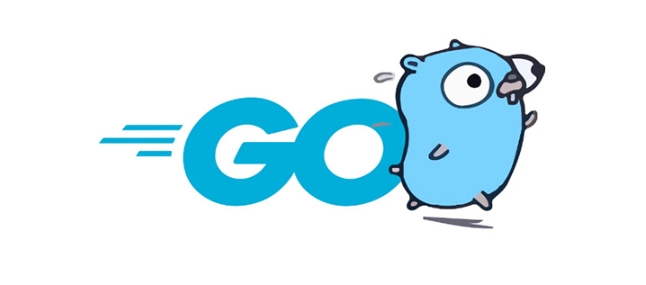How to join a slice of strings in Go
Use the strings.Join() function to concatenate string slices into a single string. 1. The function receives two parameters: string slices and separators; 2. Returns a single string that connects all elements with a specified separator; 3. Common usages include using commas, empty strings, newlines, or custom separators; 4. The slice must be of type []string, and non-string types need to be converted first; 5. For empty slices, the function returns an empty string; therefore, strings.Join() is an efficient and recommended standard method.

In Go, if you have a slice of strings and want to join them into a single string, you should use the strings.Join() function from the strings package. It's straightforward and efficient.

Use strings.Join() to combine string slices
The strings.Join() function takes two arguments: a slice of strings and a separator string. It returns a single string with all elements concatenated, separated by the specified delimiter.
package main
import (
"fmt"
"strings"
)
func main() {
parts := []string{"hello", "world", "go", "programming"}
result := strings.Join(parts, " ")
fmt.Println(result) // Output: hello world go programming
}Here:

-
partsis your slice of strings. -
" "is the separator — in this case, a space. - The result is a single string with each element joined by the separator.
Common use cases and variations
You can use different separators depending on your needs:
- Comma-separated :
strings.Join(parts, ", ") - No separator :
strings.Join(parts, "") - Newlines :
strings.Join(parts, "\n") - Custom delimiter :
strings.Join(parts, " | ")
data := []string{"apple", "banana", "cherry"}
fmt.Println(strings.Join(data, ", "))) // apple, banana, cherry
fmt.Println(strings.Join(data, "")) // applebanacherry
fmt.Println(strings.Join(data, " -> "))) // apple -> banana -> cherryImportant notes
- The slice must be of type
[]string. If you have another type (like[]int), you'll need to convert the elements to strings first. -
strings.Join()is more efficient than using loops orfmt.Sprintfor joining, especially for large slices. - If the slice is empty,
strings.Join()returns an empty string.
So, for joining a slice of strings in Go, always reach for strings.Join(slice, separator) — it's clean, fast, and part of the standard library.

Basically, that's all there is to it.
The above is the detailed content of How to join a slice of strings in Go. For more information, please follow other related articles on the PHP Chinese website!

Hot AI Tools

Undress AI Tool
Undress images for free

Undresser.AI Undress
AI-powered app for creating realistic nude photos

AI Clothes Remover
Online AI tool for removing clothes from photos.

Clothoff.io
AI clothes remover

Video Face Swap
Swap faces in any video effortlessly with our completely free AI face swap tool!

Hot Article

Hot Tools

Notepad++7.3.1
Easy-to-use and free code editor

SublimeText3 Chinese version
Chinese version, very easy to use

Zend Studio 13.0.1
Powerful PHP integrated development environment

Dreamweaver CS6
Visual web development tools

SublimeText3 Mac version
God-level code editing software (SublimeText3)
 go by example http middleware logging example
Aug 03, 2025 am 11:35 AM
go by example http middleware logging example
Aug 03, 2025 am 11:35 AM
HTTP log middleware in Go can record request methods, paths, client IP and time-consuming. 1. Use http.HandlerFunc to wrap the processor, 2. Record the start time and end time before and after calling next.ServeHTTP, 3. Get the real client IP through r.RemoteAddr and X-Forwarded-For headers, 4. Use log.Printf to output request logs, 5. Apply the middleware to ServeMux to implement global logging. The complete sample code has been verified to run and is suitable for starting a small and medium-sized project. The extension suggestions include capturing status codes, supporting JSON logs and request ID tracking.
 reading from stdin in go by example
Jul 27, 2025 am 04:15 AM
reading from stdin in go by example
Jul 27, 2025 am 04:15 AM
Use fmt.Scanf to read formatted input, suitable for simple structured data, but the string is cut off when encountering spaces; 2. It is recommended to use bufio.Scanner to read line by line, supports multi-line input, EOF detection and pipeline input, and can handle scanning errors; 3. Use io.ReadAll(os.Stdin) to read all inputs at once, suitable for processing large block data or file streams; 4. Real-time key response requires third-party libraries such as golang.org/x/term, and bufio is sufficient for conventional scenarios; practical suggestions: use fmt.Scan for interactive simple input, use bufio.Scanner for line input or pipeline, use io.ReadAll for large block data, and always handle
 How does the switch statement work in Go?
Jul 30, 2025 am 05:11 AM
How does the switch statement work in Go?
Jul 30, 2025 am 05:11 AM
Go's switch statement will not be executed throughout the process by default and will automatically exit after matching the first condition. 1. Switch starts with a keyword and can carry one or no value; 2. Case matches from top to bottom in order, only the first match is run; 3. Multiple conditions can be listed by commas to match the same case; 4. There is no need to manually add break, but can be forced through; 5.default is used for unmatched cases, usually placed at the end.
 go by example generics
Jul 29, 2025 am 04:10 AM
go by example generics
Jul 29, 2025 am 04:10 AM
Go generics are supported since 1.18 and are used to write generic code for type-safe. 1. The generic function PrintSlice[Tany](s[]T) can print slices of any type, such as []int or []string. 2. Through type constraint Number limits T to numeric types such as int and float, Sum[TNumber](slice[]T)T safe summation is realized. 3. The generic structure typeBox[Tany]struct{ValueT} can encapsulate any type value and be used with the NewBox[Tany](vT)*Box[T] constructor. 4. Add Set(vT) and Get()T methods to Box[T] without
 Integrating Go with Kafka for Streaming Data
Jul 26, 2025 am 08:17 AM
Integrating Go with Kafka for Streaming Data
Jul 26, 2025 am 08:17 AM
Go and Kafka integration is an effective solution to build high-performance real-time data systems. The appropriate client library should be selected according to needs: 1. Priority is given to kafka-go to obtain simple Go-style APIs and good context support, suitable for rapid development; 2. Select Sarama when fine control or advanced functions are required; 3. When implementing producers, you need to configure the correct Broker address, theme and load balancing strategy, and manage timeouts and closings through context; 4. Consumers should use consumer groups to achieve scalability and fault tolerance, automatically submit offsets and use concurrent processing reasonably; 5. Use JSON, Avro or Protobuf for serialization, and it is recommended to combine SchemaRegistr
 What is the standard project layout for a Go application?
Aug 02, 2025 pm 02:31 PM
What is the standard project layout for a Go application?
Aug 02, 2025 pm 02:31 PM
The answer is: Go applications do not have a mandatory project layout, but the community generally adopts a standard structure to improve maintainability and scalability. 1.cmd/ stores the program entrance, each subdirectory corresponds to an executable file, such as cmd/myapp/main.go; 2.internal/ stores private code, cannot be imported by external modules, and is used to encapsulate business logic and services; 3.pkg/ stores publicly reusable libraries for importing other projects; 4.api/ optionally stores OpenAPI, Protobuf and other API definition files; 5.config/, scripts/, and web/ store configuration files, scripts and web resources respectively; 6. The root directory contains go.mod and go.sum
 how to break from a nested loop in go
Jul 29, 2025 am 01:58 AM
how to break from a nested loop in go
Jul 29, 2025 am 01:58 AM
In Go, to break out of nested loops, you should use labeled break statements or return through functions; 1. Use labeled break: Place the tag before the outer loop, such as OuterLoop:for{...}, use breakOuterLoop in the inner loop to directly exit the outer loop; 2. Put the nested loop into the function, and return in advance when the conditions are met, thereby terminating all loops; 3. Avoid using flag variables or goto, the former is lengthy and easy to make mistakes, and the latter is not recommended; the correct way is that the tag must be before the loop rather than after it, which is the idiomatic way to break out of multi-layer loops in Go.
 Using the Context Package in Go for Cancellation and Timeouts
Jul 29, 2025 am 04:08 AM
Using the Context Package in Go for Cancellation and Timeouts
Jul 29, 2025 am 04:08 AM
Usecontexttopropagatecancellationanddeadlinesacrossgoroutines,enablingcooperativecancellationinHTTPservers,backgroundtasks,andchainedcalls.2.Withcontext.WithCancel(),createacancellablecontextandcallcancel()tosignaltermination,alwaysdeferringcancel()t







